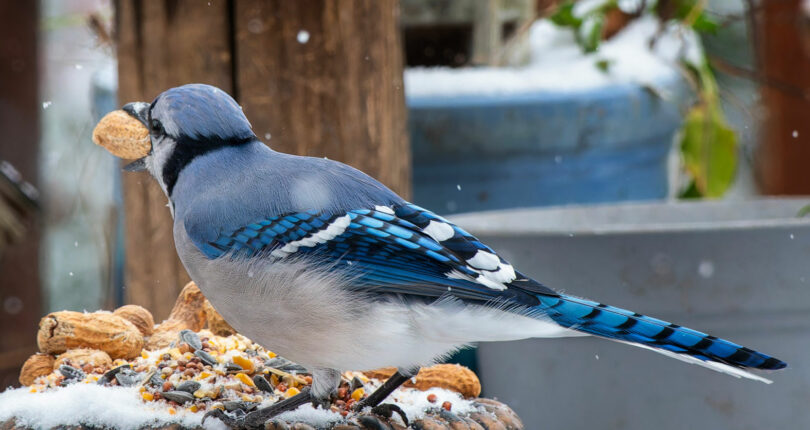I’m not exactly a dedicated bird watcher, but I am fascinated by the little buggers. I grew up in a tiny mountain town and spent much of my youth in the woods hunting, fishing, and doing other countryboy stuff. Birds were everywhere, so I naturally learned to identify them, but I was more interested in stalking rabbits, squirrels, and deer. It wasn’t until I discovered that songbirds were actually woodland tattletales that played an important role in the lives of all the other forest creatures that I began paying more attention to them. I learned that when birds were feeding, singing, and flitting happily about, it meant all was well in the woods. But if they suddenly flushed or inexplicably disappeared and the woods went quiet as death, it signaled danger; a hawk or cat was on the prowl. Likewise, the loud, shrieking calls of jays or crows warned of an owl, fox, or other predator hunting close by. Rabbits and squirrels hid or froze in their tracks; deer went on full alert.
Backyard birds behave similarly. If they flush unexpectedly into nearby bushes or mysteriously vanish altogether, a hawk, kestrel, or falcon is probably nearby — or maybe the neighbor’s house cat. Depending on where you live, it could also be a red fox, coyote, or bobcat. The birds will know. And they’ll let everyone else know.
I never cease to marvel at their uncanny instincts. Our feeders can be empty for a week, but the minute I fill them, birds descend on them from out of nowhere. The day before a cold front strikes, they’ll magically appear at our feeders in droves like humans flocking to the supermarket the second a TV weather forecaster announces a storm is on the way. I’ve noticed, too, they usually appear each morning in a kind of prearranged pecking order — by species: flickers first, then blue jays, followed by nuthatches and chickadees. Eventually finches, sparrows, and downy woodpeckers join the fray. The routine is often the same. Who ordained this order, and why?
Do the same birds return daily? Yearly? How long do they live? Are they local residents, migrators, or just random, casual wanderers? It’s hard to tell. Apart from the conspicuous color differences between males and females in some species, it can be difficult to distinguish one bird from another in the same species. But recently, a blue jay with a horribly deformed beak answered at least a few of those questions for me. My photos show he (she?) has been coming to my feeders with five other blue jays several times a week since May 2021, so now I know for certain that some birds do return regularly and that blue jays can live for at least three years. But it raises more questions: How did its beak get mangled? Are those other jays his family or friends? Do they know each other? Where do they go after they eat? … at night? … during a storm? Like I said: They’re fascinating
Dennis Smith is a freelance outdoors writer and photographer whose work appears nationally. He lives in Loveland.

